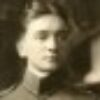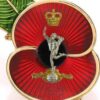AWI – Number of models in flank companies?
Home › Forums › Historical › Black Powder › AWI – Number of models in flank companies?
Tagged: Rebellion! Redcoats Modelling
- This topic has 3 replies, 4 voices, and was last updated 3 years, 2 months ago by
 Baron Von Wreckedoften.
Baron Von Wreckedoften.
-
AuthorPosts
-
February 7, 2021 at 3:22 pm #184100
Steven Emsley
ParticipantHi all!
Just received my AWI British Starter Box and before I put glue to plastic I was wondering how many models people assigned to the flank companies? The infantry box would suggest that a unit of 30 would contain 6 light bobs, so would you build up 6 as grenadiers? That would leave the centre companies looking somewhat light, manpower-wise. My instincts would be in blocks of 4, but wondered how the community at large approached it?
-
This topic was modified 3 years, 5 months ago by
Steven Emsley.
February 8, 2021 at 8:52 am #184138 NatParticipant
NatParticipantNot AWI, but Napoleonics… I’ve got for my french i’ve got 4 Light, 4 Grenadiers & a 4 strong command party (flag, officer, muscian & soldier). Then the rest of the unit (4 in a small, 12 in a normal, 20 in a large unit) are all standard guys.
My Napoleonic russians who are slightly different in that their line regiments where 4 companies, 3 line and 1 grenadier (which 1 of the 2 platoons was a ‘light’ ) have 8 grenadiers, a command party and the rest are standard line troops.
This is more for game play as the rules say 1/3rd of the unit is to form the skirmish line in a mixed formation.
February 8, 2021 at 9:17 am #184140 invisible officerParticipant
invisible officerParticipantThe british AWI battalion sized “regiment” had 10 companies, including a light and a grenadier one.
so 10 % should be light, from 30 that’s 3.
The pic shows my 4th rgt. grenadier company
—-
My own AWI are 4 cm and I play in a 1 to 1 rato. With the small number of effectives no problem, a company often fielded just 30 – 32 OR.
-
This reply was modified 3 years, 5 months ago by
 invisible officer.
invisible officer.
-
This reply was modified 3 years, 5 months ago by
 invisible officer.
invisible officer.
Attachments:
May 1, 2021 at 10:34 am #185349 Baron Von WreckedoftenParticipant
Baron Von WreckedoftenParticipantHi Steven, Sorry for the delay in replying – not long joined the forum and only just found this. The answer is “it depends”. If you take the 30 figures as a full-strength battalion (about 450-650 men according to which period of the war you are covering), then Invisible Officer is spot on – 3 grenadiers and 3 light infantry. However, if you take the 30 figures as representing a battalion that has been “in theatre” for a year or so without having received any replacements, then the “box figure” of 6 of each type, plus 18 centre company men, would also be an accurate representation (albeit at a different figure:man ratio). Whilst the flank companies were – with very rare exceptions – siphoned off into separate grenadier and light battalions, every effort was usually made to keep them up to strength at the expense of the centre or “hat” companies (in fact, this was a growing argument against the creation of such battalions in this era), so having the centre companies look a bit understrength would in fact be perfectly accurate.
The reason for the different battalion strengths (450-650) is that the numbers of men in a company changed quite frequently during the war. At the kick-off, it was 477 all ranks (the peacetime establishment) of which some – usually three per company – were “warrant men” who did not actually exist but whose pay went into the regimental funds to pay for extra clothing, bandsmen (as opposed to fifers and drummers), etc etc. In the early Autumn of 1775, there was an official augmentation of a sergeant, a drummer (two for the grenadiers) and 18 rank-and-file per company, but obviously this did not start to appear until well into the 1776 campaigning season – and many regiments already serving in North America did not receive it for several years. Special regiments, such as Highlanders and the Composite Brigade of Foot Guards were larger and contained companies of 100 all ranks (sometimes more), and these could be split into two battalions, like the 42nd Foot (Black Watch) and the CBoFG, or if they were already in 1,000-strong battalions (eg the 1/71st and 2/71st)) then each battalion was split into two wings. The idea was that a given number of men would cover a specific distance within the line of battle and a commander would therefore know how much of the battlefield his army could realistically occupy.
Hope that helps – I’m actually the author of several of the Osprey campaign books on the AWI, so don’t be afraid to come back if you have more questions.
-
This reply was modified 3 years, 2 months ago by
 Baron Von Wreckedoften.
Baron Von Wreckedoften.
-
This topic was modified 3 years, 5 months ago by
-
AuthorPosts
- You must be logged in to reply to this topic.

